Diving
Warm seas, exceptional visibility and a seabed rich in marine life make Istria one of Croatia’s top diving destinations. From historic shipwrecks to underwater reefs teeming with life, there’s something for every level of diver.
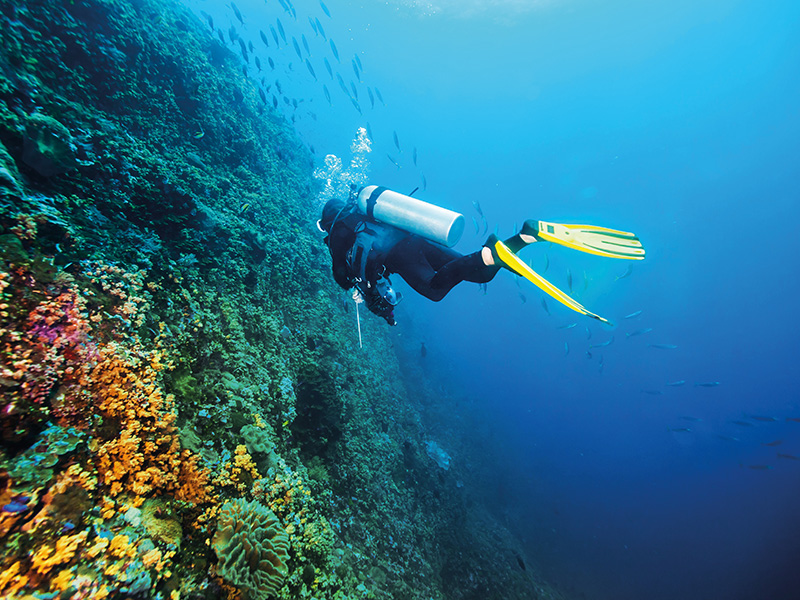
An underwater world awaits
Shipwrecks
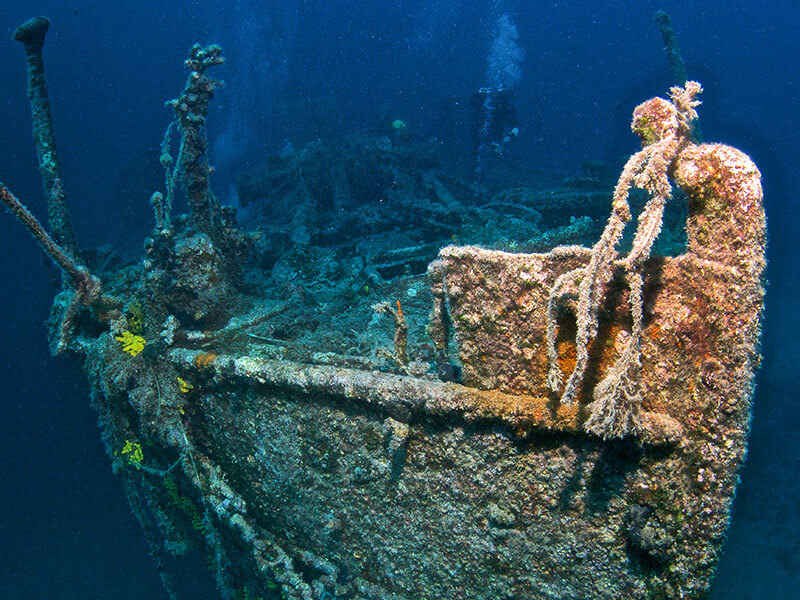
Explore shipwrecks in Istria
Explore Istria’s fascinating underwater history through its famous shipwrecks, each telling a unique story of maritime trade, naval conflict, or tragic misfortune. These sunken relics offer thrilling opportunities for advanced divers, with depths ranging from accessible shallows to deep technical dives. From well-preserved vessels to haunting remnants of World War naval battles, Istria’s shipwrecks provide a rare glimpse into the past, with coral-encrusted hulls and abundant marine life making each dive an unforgettable experience.
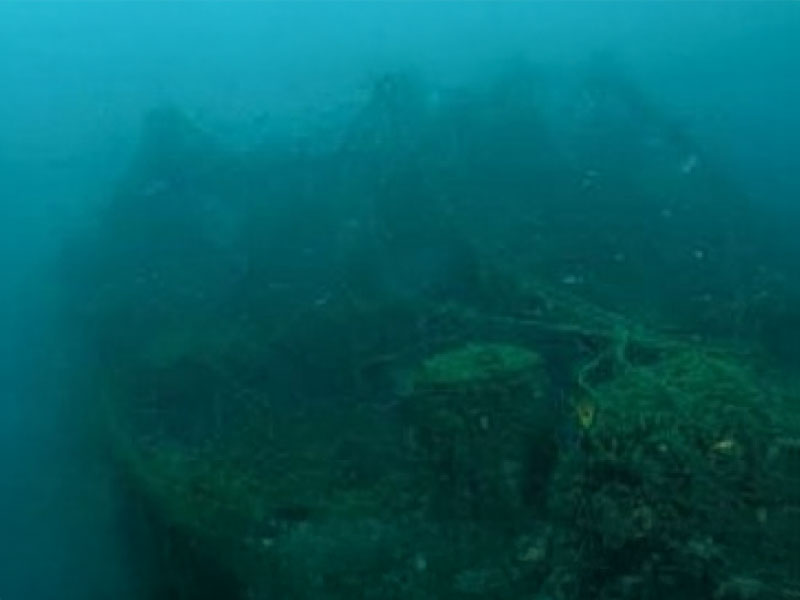
Numidia
A historic wreck with impressive visibility.
Show more

The Numidia, a wreck near Poreč, rests at a depth of approximately 40 metres. With sections of deck and machinery still visible, it’s a fascinating site for experienced divers. Over time, soft corals, sponges and shoals of fish have transformed the wreck into a colourful reef, blending history and nature in one dive.

Coriolanus
A WWII British minesweeper now covered in marine life.
Show more

The Coriolanus, a British Royal Navy minesweeper, sank off the coast of Novigrad in 1945. Resting at 11 to 25 metres, the wreck is remarkably well-preserved, with the bridge, gun mounts and hull structure still intact. Over the decades, sponges, crustaceans and shoals of fish have made it their home, turning the wreck into a flourishing reef. Its historic significance combined with its abundant marine life makes Coriolanus a must-see for divers with a passion for history.
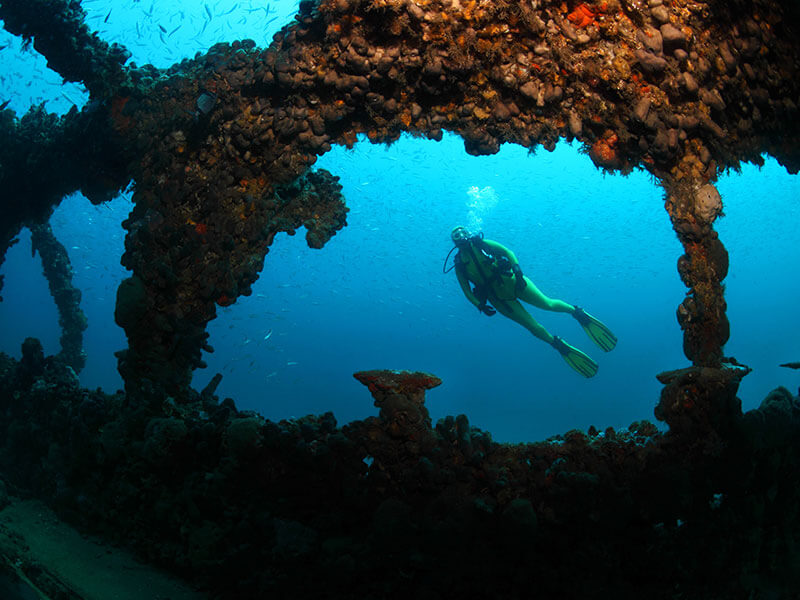
Lina
Explore this Italian cargo ship that sank near Rabac in 1914.
Show more

The Lina, an Italian cargo ship, met its fate in 1914, sinking near Cape Pečen. Resting at depths between 22 and 55 metres, it’s accessible to both advanced divers and technical enthusiasts. The wreck’s steel frame is partially intact, offering a chance to explore open holds, now home to sponges and small fish. With excellent visibility and its location near scenic underwater walls, Lina is perfect for those wanting to combine wreck diving with natural beauty.
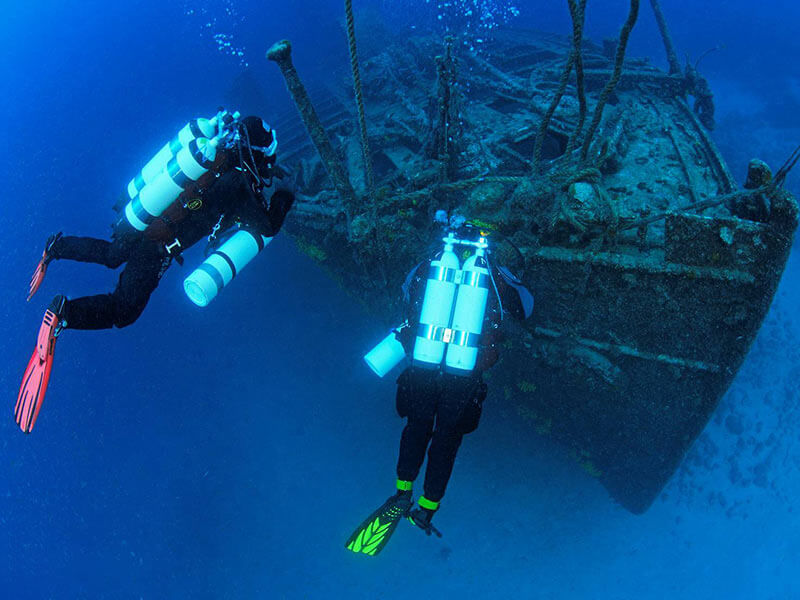
Argo
A World War II wreck resting at 45 metres off Rijeka.
Show more

The Argo, a WWII ship that once transported goods for the Italian Navy, sank in 1948 after hitting a mine near Rijeka. Resting at 45 metres, the wreck is intact and upright, offering a haunting glimpse into history frozen in time. Its open holds and bridge are now home to conger eels, scorpionfish and sponges, making it a fascinating dive for experienced divers. The Argo’s combination of history, depth and rich marine life makes it one of the most popular wreck dives in Istria.
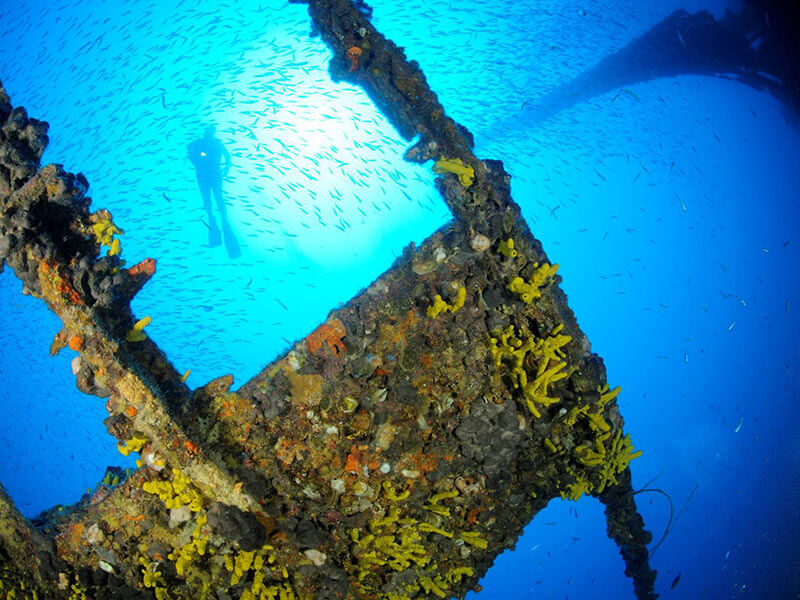
Gilda
Investigate the sunken steamship Gilda near Poreč.
Show more

The Gilda, a steamship from the early 20th century, lies at depths between 28 and 36 metres near Poreč. Its steel frame, cargo holds and propeller are still visible, making it an exciting site for wreck enthusiasts. The wreck has become a natural reef, attracting moray eels, scorpionfish and colourful nudibranchs. With good visibility and an accessible depth, Gilda offers a balanced mix of history and nature, making it a great choice for intermediate and advanced divers.
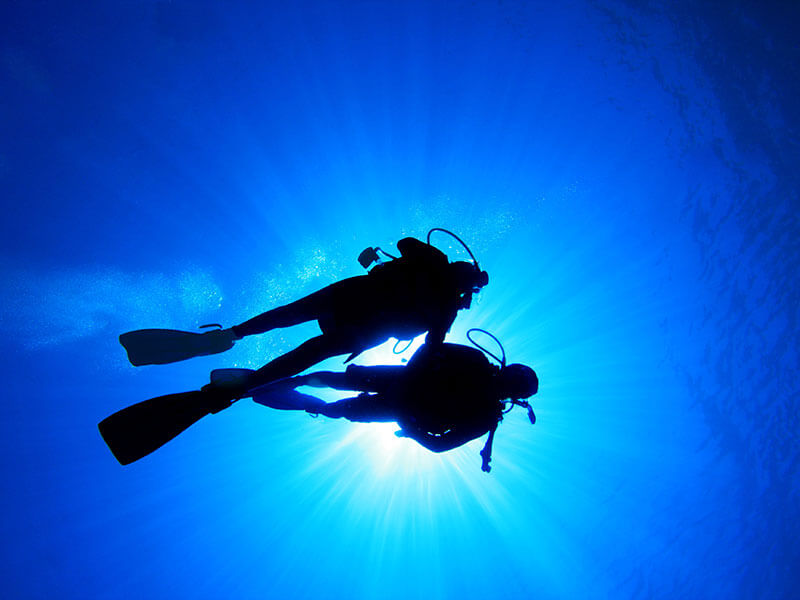
Vis (ex Renteria)
A cargo steamship sunk after WWII explosion near Rabac.
Show more

Built in 1921, the Vis started life as the Renteria before being renamed. In 1946, while transporting coal, the ship hit a mine near Cape Mašnjak at the entrance to Plomin Bay. The resulting explosion sank the ship, though the crew was rescued. Today, the wreck lies in multiple sections, with remains of wooden lifeboats visible nearby. Corals, crustaceans and small fish have colonised the site, making it a historically rich and biodiverse dive.
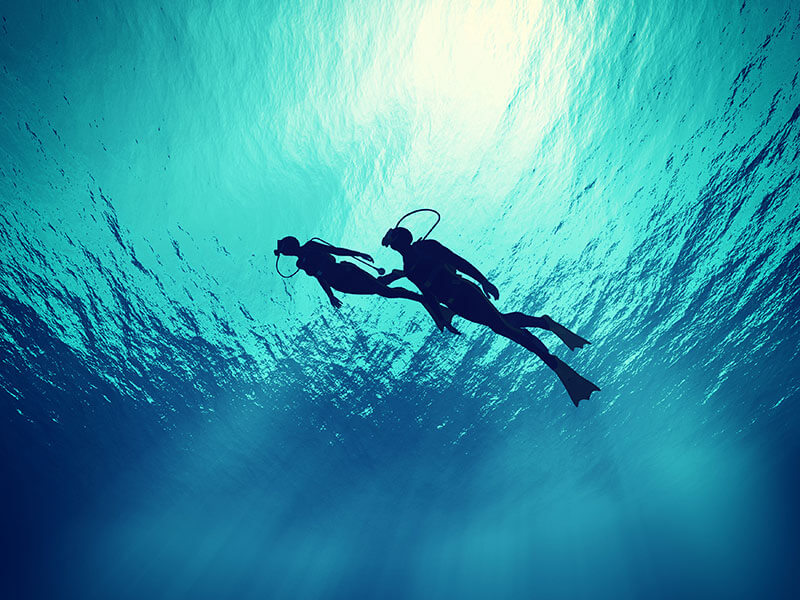
Luana
Well-preserved merchant shipwreck for experienced divers.
Show more

The Luana, a merchant ship sunk in 1943 after striking a mine, rests off Rabac in an upright position, with the bow separated just a few metres away. Thanks to excellent visibility and gentle currents, the wreck is a popular site for technical divers. The well-preserved structure allows for safe penetration dives, with plenty of fish now calling the wreck home. Due to its depth and complexity, Luana is best suited for experienced divers seeking a rewarding historical dive.
Reefs
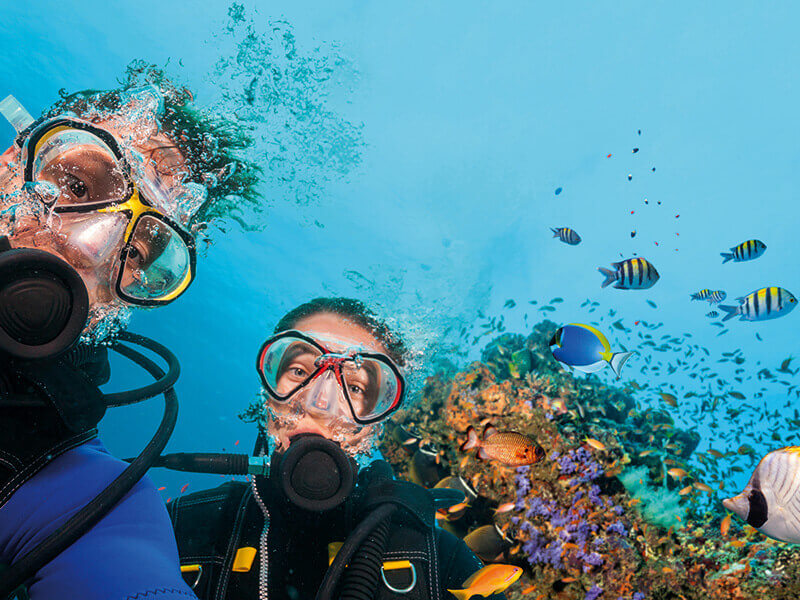
Explore reefs in Istria
Beneath Istria’s crystal-clear waters, reefs are filled with vivid marine life and colourful coral formations. These underwater gardens range from shallow beginner-friendly spots to dramatic vertical walls covered in sponges, gorgonians and hidden crevices where octopuses, moray eels and scorpionfish lurk. Whether you’re enjoying a relaxed dive or a more challenging exploration, Istria’s reefs reveal the rich biodiversity that makes the region’s underwater world so rewarding.
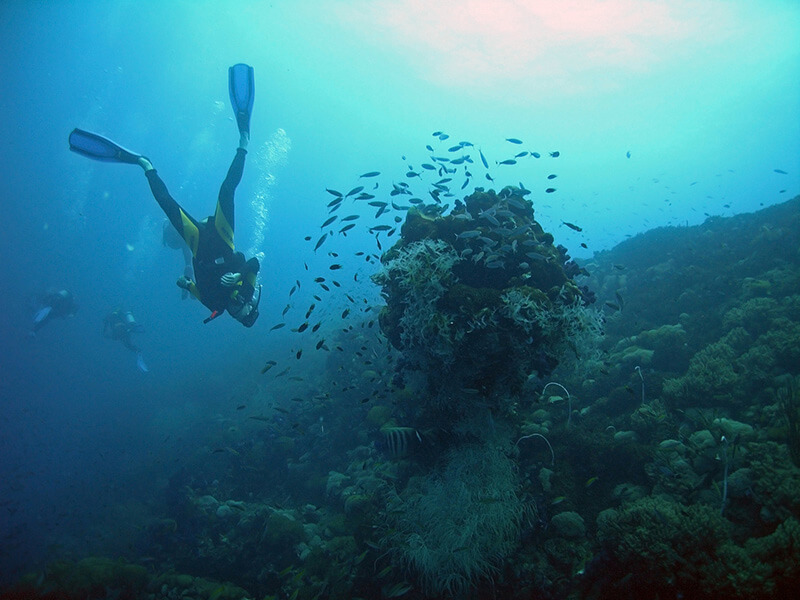
The Rubini Reef
Deep reef rich in fish and larger predators.
Show more

Starting at 20 metres and sloping to 45 metres, the Rubini Reef is a deep reef best suited for experienced divers. The site is teeming with marine life, including dentex, sea bass, scorpionfish and frogfish. Its deeper sections, combined with excellent visibility, make it a prime spot for predator sightings, while the upper slopes feature colourful sponges and soft corals, offering something for all skill levels.
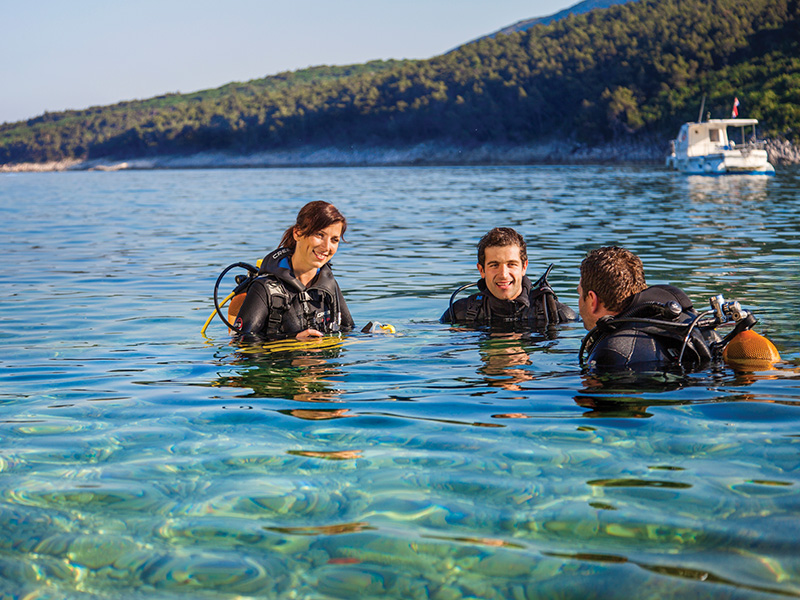
St. Giovanni Reef
Discover a shallow reef full of life near St. Giovanni Island.
Show more

Perfect for beginners and photographers, St. Giovanni Reef near Poreč offers easy access and gentle depths down to 20 metres. This vibrant site is home to scorpionfish, gobies and octopuses, while brightly coloured sponges cover the rocky seabed. Shallow enough for long dives, it’s ideal for spotting small critters and observing the interplay of light on the seabed. Whether you’re taking your first reef dive or exploring with a camera, St. Giovanni Reef is a rewarding site for all skill levels.
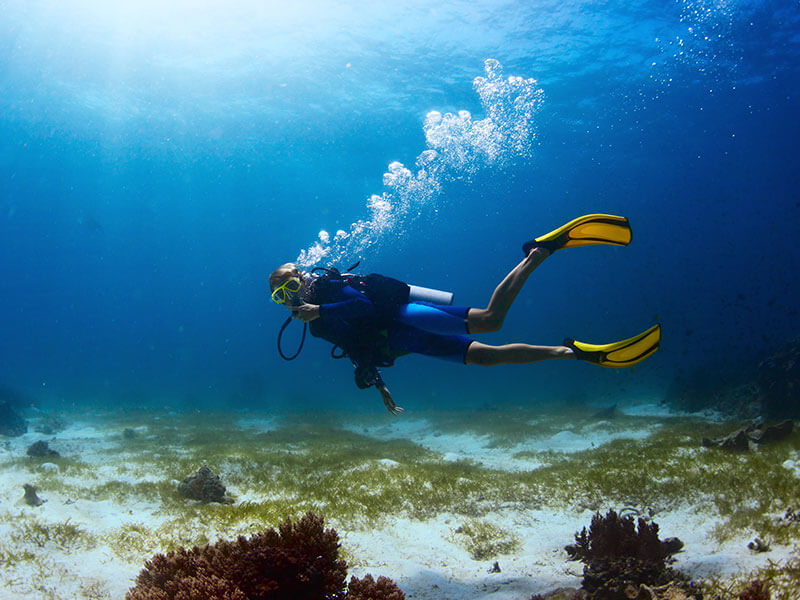
Cape Rakovica
Explore ancient shipwreck fragments and caves.
Show more

Located near Rabac, Cape Rakovica Reef offers a fascinating dive along a rugged underwater wall that descends beyond 30 metres. The reef is punctuated by caves, overhangs and cracks that shelter octopuses, lobsters and scorpionfish. At 29 to 32 metres, divers can even spot fragments of amphorae from a sunken Roman ship, blending natural beauty with archaeological intrigue. Excellent visibility, rich biodiversity and historical features make this a signature dive site in eastern Istria.
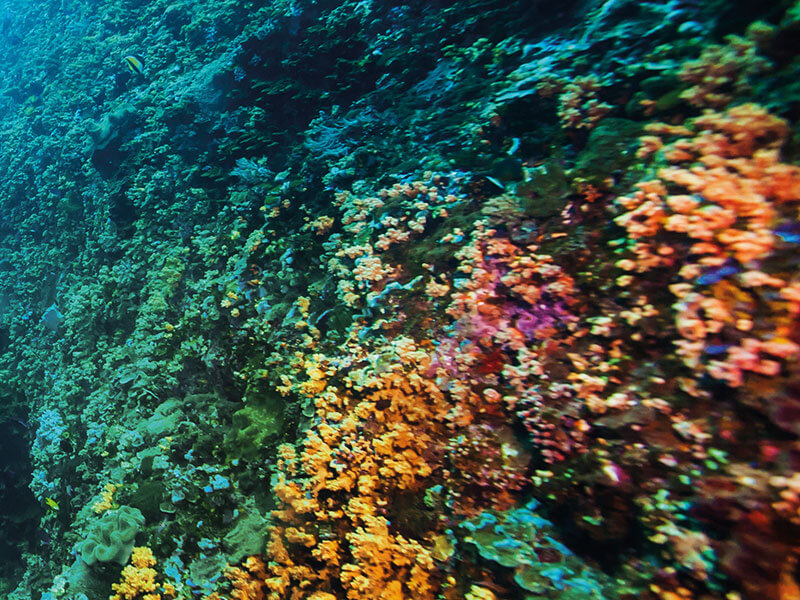
Bumbište
A colourful 200m wall dive, ideal for all skill levels.
Show more

Stretching over 200 metres, Bumbište Reef near Rabac offers a long, vibrant wall dive suitable for all divers. The wall features numerous holes, crags and nooks, creating hiding spots for moray eels, lobsters and scorpionfish. With depths reaching 20 metres or more, it’s suitable for both beginners and advanced divers, while entry from the nearby shore offers extra safety. Rich in colour and life, Bumbište is a top spot for exploring Rabac’s underwater beauty.
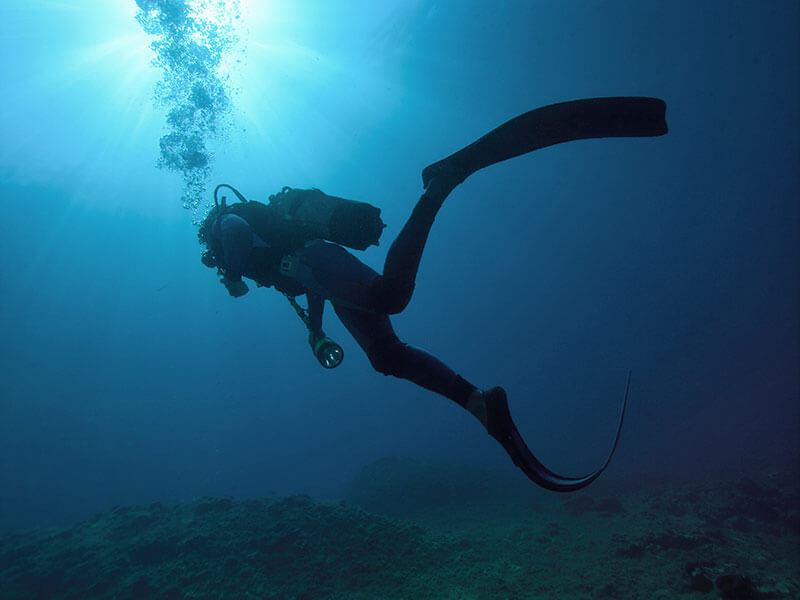
Red Crag
Beginner-friendly reef with sandy slopes and great visibility.
Show more

Red Crag is often used for final dives in PADI courses, thanks to its gentle, sandy slopes and easy orientation. Reaching depths of around 20 metres, the site is perfect for practising navigation skills while spotting marine life like dentex, sea bass, gilt poll and leer fish. With calm conditions, good visibility and plenty of open space, Red Crag is a stress-free dive site perfect for novices and relaxed fun dives.
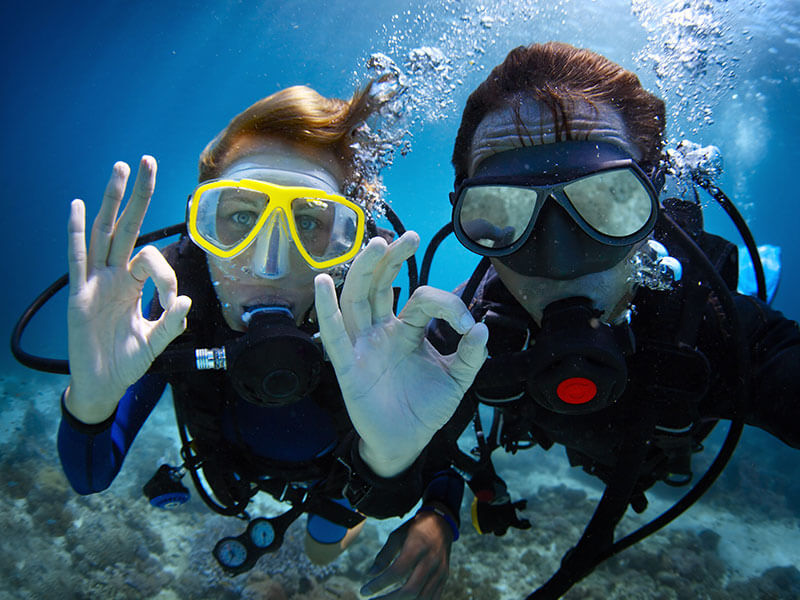
Wall near Škvaranske
Dramatic wall dive with caves and rocky extensions.
Show more

The wall near Škvaranske, close to Rabac, offers a scenic dive along a craggy underwater cliff. Divers follow the wall southwards, passing vertical extensions, small caves and overhangs. The average depth is 25 metres, but the rocky extensions drop to 40 metres, making this site suitable for intermediate to advanced divers. With plenty of nooks and hiding spots, the wall holds octopuses, lobsters and shoals of seabream, ensuring there’s always something to discover.
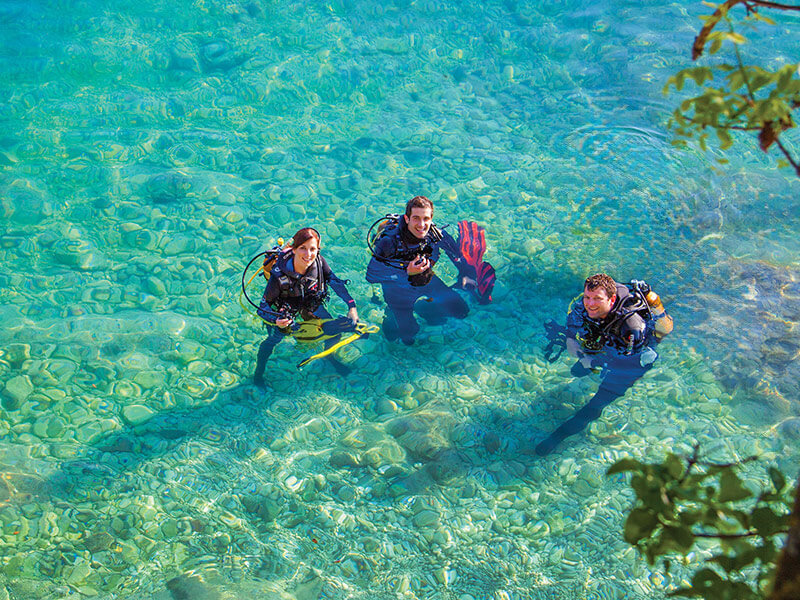
Faro Island
Deep reef with rocky seabed and abundant marine life.
Show more

Located at the outer edge of the Rovinj archipelago, Faro Island Reef offers a beautiful rocky seabed that descends to 45 metres. Known for its rich marine biodiversity, the site is home to shoals of fish, scorpionfish and octopuses, with sponges and corals adding bursts of colour. Its depth and currents make this a site for experienced divers only, but those who dive here are rewarded with excellent visibility and thriving marine life, making it one of Istria’s standout reef dives.
Customer services
Other services
Valamar Riviera d.d. has accommodation facilities in the Republic of Croatia and the Republic of Austria, where it operates through its branch Valamar Riviera d.d., Zweigniederlassung Austria, Gamsleitenstraße 6, 5563 Obertauern, FN 583355 a (Landesgericht Salzburg), VAT ID: ATU 78289647. Additionally, Valamar is a management company that, based on contracts, manages the tourism segment of the business and offers accommodation services in the facilities of Imperial Riviera d.d., Republic of Croatia, Rab, Jurja Barakovića 2, OIB: 90896496260 and HELIOS FAROS d.d., Republic of Croatia, Stari Grad, Naselje Helios 5, OIB: 48594515409. The term Valamar properties includes accommodation facilities of Valamar Riviera d.d., in Croatia and Austria, as well as accommodation facilities of other companies it manages.
